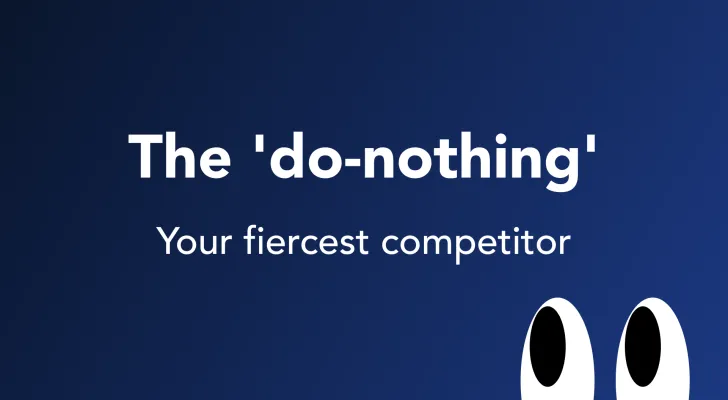By Tom Lavery, Jiminny CEO and Founder
The word uncertainty is almost cliché at this point, but it’s more present than ever in today’s conversations. We sales teams have had more than our fair share of uncertainty over the last few years, and sometimes it feels like we’re running from one unexpected global crisis to the next.
We know sales has changed – but how and why? To find answers, we at Jiminny commissioned the research firm Coleman Parkes to conduct an international survey of 300 B2B sales professionals.
Since its release, I’ve had the chance to discuss these findings with many sales leaders. What came to light is that there are 3 major ways B2B sales has changed and how these leaders are helping their teams combat their newfound challenges.
1. B2B sales is harder
About half of respondents (48%) said the role of sales is “getting harder” or “much harder” compared to pre-pandemic times.
Why? A major driver is that the sales environment changed; businesses were suddenly forced to adopt remote work policies, and building relationships over video is very different to doing so face-to-face.
There are complicating factors too: Every deal is being scrutinized more carefully. There are more decision makers involved in B2B buying decisions. That means more people to schedule video calls with and to win over in order to move a deal forward. As a result, the sales cycle has slowed down and involves more touchpoints.
Here’s what sales leaders can do to help:
- Coach your team on selling virtually. Prepare your team as much for selling in the virtual world as you would have done for the physical world. Sales leaders don’t have to do it all – leader-led coaching is great, but don’t forget to encourage coaching from peers (especially your top performers) and self-coaching by reviewing recorded calls. Selling on Zoom just isn't the same as being face to face, so make sure reps are prepared for this.
- Adjust for new stakeholders. New stakeholders are likely to have different questions and objections. Take note of the overall trends – what titles are joining calls and what themes are emerging in the conversation?
- Listen for changes in customer conversations. You can see trends emerging in the customer conversations your sales team are having. For example, customers may be more concerned with ROI or efficiency instead of growth when they feel their budgets are being squeezed. Understanding these subtle changes in verbiage can drive changes in messaging and responses to sales objections.
2. The hybrid office is the likely future
The remote office is one of the key reasons respondents said the job of sales has become harder. While the survey found most employers (56%) want to bring sales back to the office full time, about 7 in 10 say they’re still remote right now.
The middle ground is the hybrid environment where people come into the office 2-3 times per week. I believe this is the future.
As someone who interviews and hires salespeople regularly, it’s safe to say that we wouldn’t be competitive if we tried to force the team back into the office 100% of the time. There are just too many alternatives with remote or hybrid office environments.
The vast majority of sales leaders I speak with agree, so the question becomes: “if a hybrid environment is the present and future, what can sales leaders do to compensate for the in-office collaboration and water cooler conversations that can’t happen?”
And as an answer to that, I have a few ideas:
- Create a dedicated digital channel for questions. This channel has to be a safe environment for the team to share questions. When a salesperson faces a new objection, they can’t always turn to their peer on the desk next to them and ask how they overcome this. A channel helps fill the gaps with a level of immediacy.
- Develop programs focused on improving sales knowledge. At Jiminny, we run something called a “confusion clinic” which was an initiative I brought with me from my previous company. This was a safe place for the team to visit during lunch and ask questions about anything they needed more clarity on. Ours is every week on a Friday, either online, in-person or both depending on who’s in the office.
- Foster a “safe” environment to ask questions. I’ve used the word safe several times because it’s key to achieving honesty. Salespeople have to know it’s safe to put themselves out there and ask questions. If they’re criticized or embarrassed for demonstrating curiosity, you risk suppressing their hunger to learn and grow.
We can’t replicate the physical office online, but we can adapt and overcome.
3. Sales on-boarding has improved, but there's more room to grow
6 in 10 respondents “agreed” or “strongly agreed” that their organization had improved their on-boarding process following the pandemic. Recruiting and retention, alongside the deployment of new technology, were given as key reasons in open-ended comments.
Among the onboarding activities employers offered were the following:
- 35% said 1:1 meetings with sales leaders;
- 33% said business, market or product demonstrations;
- 30% said listening to live sales calls;
- 30% said 1:1 time with experienced sales team members;
- 29% said product demonstrations or training;
- 29% said listening to recorded sales calls;
- 28% said self-paced sessions or education;
- 28% said a prescribed reading list (white papers, case studies, articles, etc.);
- 28% said instructor-led sessions or education; and
- 27% said role-playing / practice sales calls.
What else can sales leaders do to improve sales onboarding?
- Improve the process. As the saying goes, necessity is the mother of innovation. All these changes are why businesses have focused on improving onboarding, so don’t take your foot off that pedal now. Ask your sales team for feedback and look for ways to improve onboarding.
- Test for knowledge retention. It’s one thing to attend a class and another to retain what you learned. An important part of improving the onboarding process is sharing and repeating knowledge to ensure salespeople are absorbing new information.
- Consider a sales accreditation process. I used to work for a company that had a program called “Fit to Pitch.” This was an internal accreditation process to help keep sales skills sharp. Salespeople were tested by conducting a product demonstration in role play scenarios against a standardized score card. Anyone could role play, but often executives (including the CEO) would join in and pretend to be a prospective customer. What we saw was a dramatic improvement in performance.
One final point I’d add is that professional development shouldn’t end with onboarding. We can always do something better and sales is a function that requires continuous improvement.
Rising to the economic occasion
Most respondents (65%) are concerned their country’s economy will dip into a recession. Sales leaders need to acknowledge it’s a possibility, make adjustments where necessary, but not let it overshadow everything and become a scapegoat.
Uncertainty means that we don’t know how things will turn out one way or another. One sales leader I spoke with recently put it this way: in March of 2020, if you had told B2B tech sales teams there would be a massive boom in a few months and you wouldn’t be able to hire anyone because things were going so well – no one would have believed you.
* * *
Tom Lavery is the founder and CEO of Jiminny, a leading conversation and revenue intelligence platform.





.webp)






